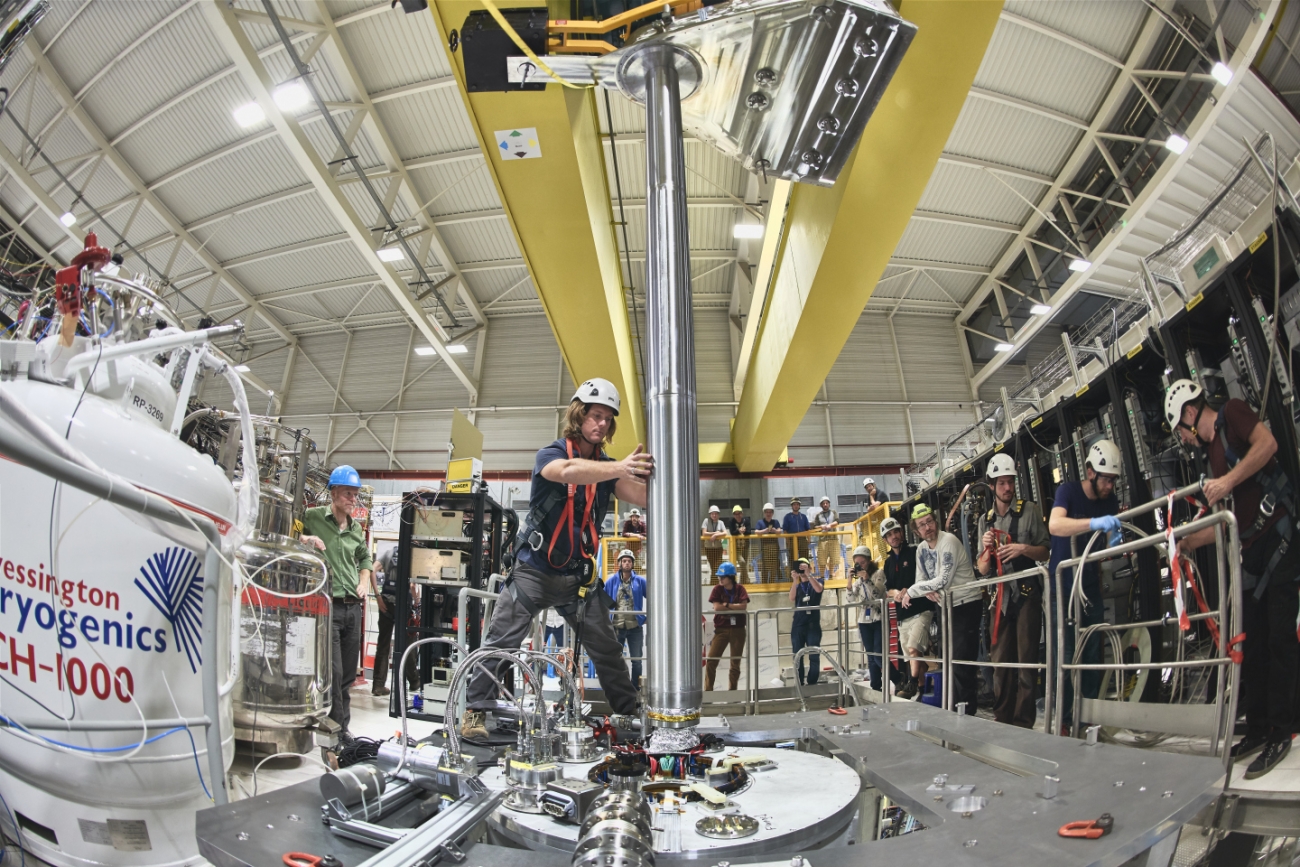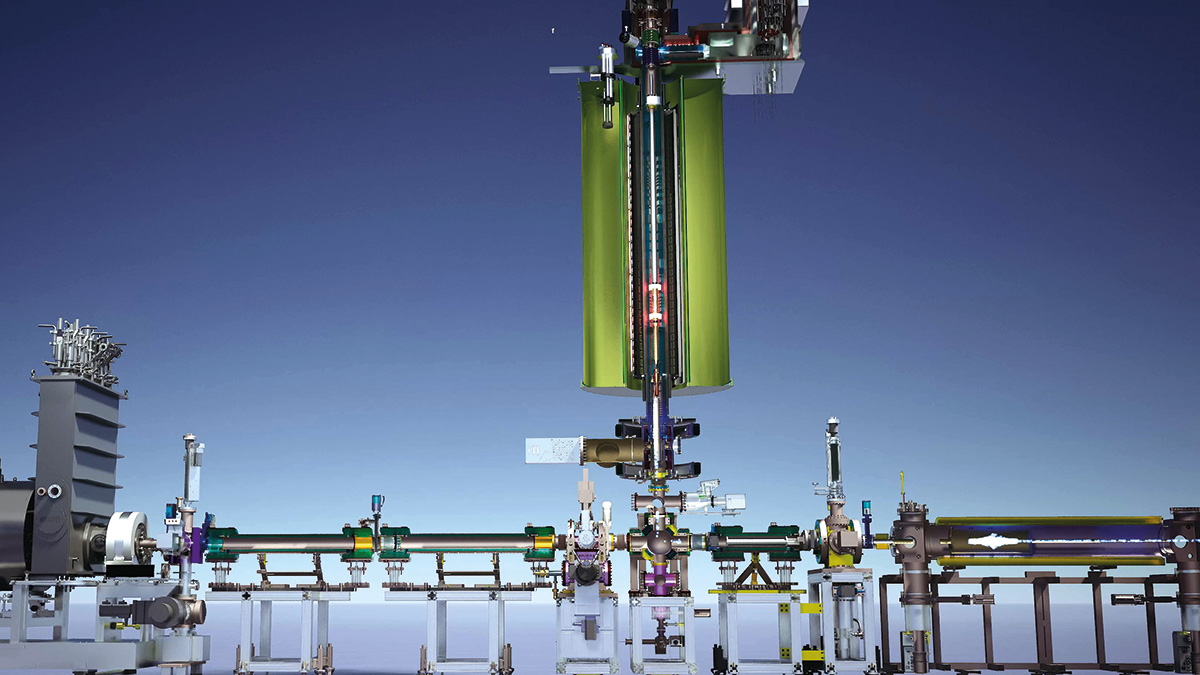ALPHA experiment at CERN observes the influence of gravity on antimatter.

In a paper published earlier this autumn in Nature, the ALPHA collaboration at CERN’s Antimatter Factory shows that, within the precision of their experiment, atoms of antihydrogen – a positron orbiting an antiproton – fall to Earth in the same way as their matter equivalents.
Even though the result will not surprise most physicists, it is the first time that we experimentally measured the force of gravity on neutral antimatter. It's another step in developing the field of neutral antimatter science, Albert Einstein's theory of general relativity, though conceived before antimatter was discovered in 1932, treats all matter identically, implying that antimatter and matter respond the same to gravitational forces. All normal matter, such as protons, neutrons and electrons, have anti-particles that bear the opposite electrical charge and, when they encounter their normal matter counterpart, annihilate completely.
The ALPHA collaboration creates antihydrogen atoms by taking negatively charged antiprotons, produced and slowed down in the Antimatter Factory’s AD and ELENA machines, and binding them with positively charged positrons accumulated from a sodium-22 source. It then confines the neutral – but slightly magnetic – antimatter atoms in a magnetic trap, which prevents them from coming into contact with matter and annihilating.

Digital twin of the ALPHA-g apparatus at CERN’s Antimatter Factory. Credit: M Brice & P Traczyk
Until now, the team has concentrated on spectroscopic studies in the ALPHA-2 device, shining laser light or microwaves onto the antihydrogen atoms to measure their internal structure. But the ALPHA team has also built a vertical apparatus called ALPHA-g, which received its first antiprotons in 2018 and was commissioned in 2021. The ‘g’ denotes the local acceleration of gravity, which, for matter, is about 9.81 metres per second squared. This apparatus makes it possible to measure the vertical positions at which the antihydrogen atoms annihilate with matter once the trap’s magnetic field is switched off, allowing the atoms to escape.
This is exactly what the ALPHA researchers did in their new investigation, following a proof-of-principle experiment with the original ALPHA set-up in 2013. After making a thin gas of thousands of antihydrogen atoms, researchers pushed it up a 3-metre-tall vertical shaft surrounded by superconducting electromagnetic coils. These can create a kind of magnetic ‘tin can’ to keep the antimatter from coming into contact with matter and annihilating. They trapped groups of about 100 antihydrogen atoms, one group at a time, and then slowly released the atoms over a period of 20 seconds by gradually ramping down the current in the top and bottom magnets of the trap. When opening any gas container, the contents tend to expand in all directions, but in this case, the antiatoms’ low velocities meant that gravity had an observable effect: most of them came out of the bottom opening, and only one-quarter out of the top.
To make sure that this asymmetry was due to gravity, the researchers had to control the strength of the magnetic fields to a precision of at least one part in 10,000. The team needed a profound understanding of the shape and structure of their magnetic trap. The whole apparatus contains about 30 magnets. Knowing the location of each wire allowed the scientists to calculate the total magnetic field in the trap, which they used to create a simulation of the experiment.
Computer simulations of the ALPHA-g set-up indicate that, for matter, this operation would result in about 20% of the atoms exiting through the top of the trap and 80% through the bottom, a difference caused by the downward force of gravity.
The idea was to find the balance point: the magnetic bias at which antihydrogen escapes from the top and bottom of the trap at the same rate. This balance point would reveal if (and how) gravity might be tipping the scales. They ran 13 iterations of the experiment, each with different magnetic biases.
“The best fit to our measurements yields a value of (0.75 ± 0.13 (statistical + systematic) ± 0.16 (simulation)) g for the local acceleration of antimatter towards the Earth,” the collaboration states in their latest paper. “We conclude that the dynamic behaviour of antihydrogen atoms is consistent with the existence of an attractive gravitational force between these atoms and the Earth.”
By averaging the results of seven release trials, the ALPHA team found that the fractions of anti-atoms exiting through the top and bottom were in line with the results of the simulations.
The full study involved repeating the experiment several times for different values of an additional “bias” magnetic field, which could either enhance or counteract the force of gravity. By analysing the data from this “bias scan”, the team found that, within the precision of the current experiment (about 20% of g), the acceleration of an antihydrogen atom is consistent with the familiar, attractive gravitational force between matter and the Earth.
Even though ALPHA has shown that antimatter falls down, the precision is too low to know if antimatter and matter experience gravity with the same strength. The next step is to improve the precision and study exactly how gravity impacts antimatter. “It has taken us 30 years to learn how to make this anti-atom, to hold on to it, and to control it well enough that we could actually drop it in a way that it would be sensitive to the force of gravity,” says Jeffrey Hangst the spokesperson of the ALPHA experiment. “The next step is to measure the acceleration as precisely as we can,” continues Hangst. ALPHA-g itself plans to aim for 1% precision by letting antihydrogen atoms bump up and down and form a quantum superposition with themselves. “We want to test whether matter and antimatter do indeed fall in the same way. Laser-cooling of antihydrogen atoms, which we first demonstrated in ALPHA-2 and will implement in ALPHA-g when we return to it in 2024, is expected to have a significant impact on the precision.” Two other experiments at CERN’s Antimatter Factory, AEgIS and GBAR, are poised to measure the local gravitational acceleration of antihydrogen (ag) using complementary methods. AEgIS will measure the vertical deviation of a pulsed horizontal beam of cold antihydrogen atoms in an approximately 1 m-long flight tube, while GBAR will take advantage of new ion-cooling techniques to measure ultra-slow antihydrogen atoms as they fall from a height of 20 cm. All three experiments are targeting a measurement of ag at the 1% level in the coming years.
